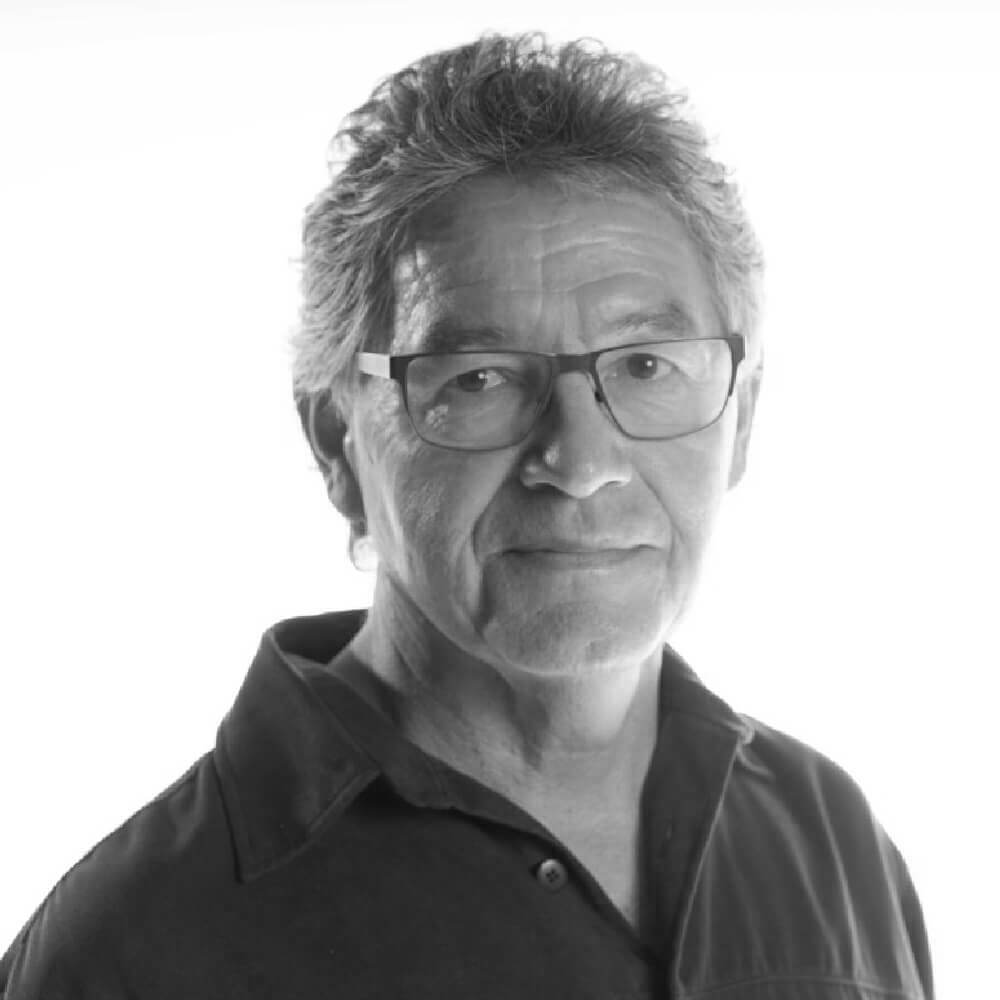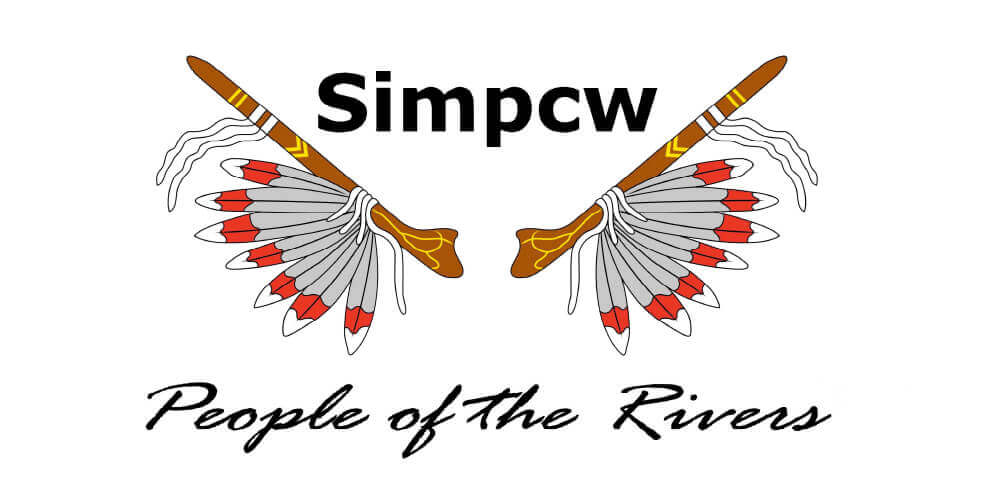Simpcw Nation Members Guide Self-Governance Initiative Using ThoughtExchange
“The Simpcw are a culturally proud community, valuing healthy, holistic lifestyles based upon respect, responsibility, and continuous participation in growth and education.” - Simpcw Nation Mission Statement
Born and raised on Simpcw Nation territory in Chu Chua, British Columbia, Nathan Matthew has worn many hats as a Simpcw member, community leader, and advocate. He served almost two decades as Chief of Simpcw Nation, as well as two terms as Chairman of the Shuswap Nation Tribal Council. He has taught First Nations education courses at both University of British Columbia and Thompson Rivers University, where he currently holds the position of Chancellor.
Through his passion for education, political advocacy, and negotiation experience, Matthew has represented both the Simpcw band and the Secwépemc Nation in working with colonial government bodies. He has served on the Secwépemc Fisheries Commission and the Secwépemc Cultural Education Society, and has acted as an advisor/negotiator on behalf of First Nations education for decades.
Due to his wealth of experience in the political and educational realms, it’s no surprise that Matthew has been chosen by the Simpcw First Nation to guide the Simpcw Nation’s self-governance initiative. In his own words, he’s “had a front row seat on all of the developments in the relationships with the federal government, the provincial government, title and rights issues, and the taking on of more responsibilities for programming and services that were delivered within our community.”

Paving the way for reconciliation
Matthew has been working with the provincial and federal colonial governments for decades, negotiating agreements and advocating for First Nations' rights to self-governance and self-determination. However, it wasn’t until 2019 that British Columbia became the first Canadian jurisdiction to implement the United Nations Declaration on the Rights of Indigenous Peoples (UNDRIP) through the Declaration Act. When UNDRIP was adopted in 2007, Canada was among only four nations to vote against it, reversing its position to one of support in 2010. Today, B.C. is the only province with an action plan in place to implement UNDRIP in its legislation. A small step on a long road, and one that Matthew has “heightened expectations” about.
“The reality is, Canada is not going anywhere, and B.C. is not going anywhere,” he says. “The introduction of the United Nations Declaration on the Rights of Indigenous Peoples means colonial governments say they're committed to recognizing our title, our rights, our right to self-determination, self-governance, and the preservation of our culture and identity.”
As opposed to engaging with the provincial government in the treaty process, Simpcw First Nation has taken the route of recognizing their rights to self-governance through the court system and the constitution. “The supreme court case judgments and UNDRIP say we should be reconciling the two different kinds of laws that are there,” Matthew explains. “Our laws, their laws; our government, their government.” Recognizing where one system begins and another ends—and how the two can work respectfully and in tandem—is the difficult and rewarding task that Matthew and other Simpcw First Nation members are committed to.
What self-governance looks like for Simpcw First Nation
Simpcw Nation’s planning has been influenced by the Secwépemc Nation governance initiative. “We fed off some of the research of the Secwépemc Nation initiative, where they took concepts from within the [Secwepemctsín] language and the traditional stories,” Matthew tells us. “We pulled out of those stories ideas about appropriate relationships or obligations we had to one another and to the land and resources.” Pulling the traditional threads of the “rules for good living” gave Simpcw First Nation some starting points for their laws.
One such traditional idea is Qwenqwent, or “being humble.” This idea informs how Simpcw First Nation members should interact with one another and with their land and resources. How is this practiced? Matthew explains it to us:
“When you talk to somebody, you approach them humbly and diminish yourself a little bit. When they’re talking to you, they do the same thing, it feeds on itself. We’re respecting people and attending to them, so that’s a pretty good idea. It also relates to the relationship that we have to the resources within the territory, the natural resources—the animals, the plants, the water. Traditionally, we had an obligation to humble ourselves in front of the natural world around us. We had to respect it and protect it, and protect our relationship with it.”
Another traditional practice that’s influencing the Simpcw Nation self-governance initiative is the concept of sharing. According to Secwépemc and Simpcw stories, members had an obligation to share any extra resources they had accumulated. “There was an expectation, and it was celebrated,” Matthew explains. “We'd have ceremonies and those that had better luck hunting or fishing, or had more berries beyond their immediate needs, they’d bring it and give it out and share it.”
Bridging the traditional and the contemporary
These traditional ideas and practices are at the foundation of Matthew’s planning, and by using ThoughtExchange, he’s been able to consult the wider Simpcw Nation membership on how they resonate as a part of self-governance. With many members working in the resource extraction industry or living away from the traditional territories, it’s vital for self-governance to reflect both the ancestral traditions and the contemporary realities of Simpcw members. “We want to make whatever we're doing relevant to the past,” Matthew explains, “but bringing a practical contemporary perspective as well, in terms of what our situation is today.”
Resource extraction has underpinned the colonial structure since contact, and Simpcw territory is now home to a pipeline as well as the mining and forestry industries. “How can you be respectful of the natural environment while you're driving a bulldozer or clear-cutting a mountainside?” Matthew asks. It’s an issue that Simpcw Nation members need to reconcile to honor the traditions of their ancestors’ self-governance structure.
“There are balances that have to be put in place, or maybe a transition of some sort, because if we're going to follow these kinds of values, then we have to act,” Matthew explains. “If it's going to be the law, there's got to be some way of interpreting it that makes sense in a contemporary world.”
In order to address the realities of Simpcw First Nation members’ lives, Matthew leverages the ThoughtExchange platform to gather their perspectives—both those on and off the territory—and make collective decisions around effective and respectful self-governance.
Connecting ThoughtExchange with Simpcw First Nation
When our Social Impact Partnerships team got wind of what was happening on Simpcw First Nation territory, they reached out to Matthew to see how ThoughtExchange could help. “It started with a phone call,” he tells us, “and after 20 minutes, I was completely taken with [ThoughtExchange]. I could see the potential for the work that I was doing.”
When Matthew first began working on the Simpcw First Nation self-governance initiative, it was difficult to connect with members who weren’t living in the local community. But for their laws to resonate with all of their members, he needed a platform to encourage open and candid conversations. That’s where ThoughtExchange came in.
“We want to talk to everybody, and the majority of people live away from reservation. And that was a particular challenge for us in the past,” Matthew shares. “ThoughtExchange has allowed members to interact from the comfort of their own homes or offices.”
And Matthew was happy to have an effective way of engaging members who were living in cities like Vancouver and Prince George, some of whom had never even been to their traditional territory. “They’re members and they have a right to have a voice,” he tells us. “[Using ThoughtExchange] we started getting more of a perspective from the off-reserve members, and their considerations were somewhat different in terms of the challenges that some individuals or families had, as well as connecting with the culture.”
Rolling out ThoughtExchange to Simpcw First Nation Members
As someone with decades of facilitation experience, Matthew’s usual process was quickly replaced by Exchanges. “I’ve facilitated a lot of workshops over the years with felt pen and chart paper, and at the end of the day, you have 30 pieces of chart paper. I’d put them up in hotel rooms and try to figure out the similar responses and categorize them,” he shares. Using an Exchange to facilitate the conversation, he’s blown away by how quickly he can see trends emerge with our built-in analytics. “ThoughtExchange does it in moments, and that’s really a time-saver.” Matthew also appreciates how easy it is to report back on the Exchange results. “I can be really efficient in terms of how I can write a report because in some cases, I just pull it right off the dashboard,” he explains.
And it’s not just the robust analytics and slick reporting features that Matthew appreciates—it’s the way the conversation unfolds, particularly how participants share their thoughts anonymously. As someone who’s spent many years in community meetings, he understands that great ideas can be missed when everyone doesn’t feel comfortable sharing them publicly. “A lot of people go to community meetings and use it as a soapbox for expressing their objections, while many more have something to say that's relevant, and they don't speak up.” With an Exchange, Matthew feels confident that he’s hearing all member perspectives on the self-governance initiative.
Matthew is impressed by the way the discussion unfolds in an Exchange, ensuring that the participants also see and consider each other’s perspectives. “With [an Exchange], they can respond to the question in any way. They can also look at whatever others have said anonymously,” he shares. “You get to see the negative opinions as well, and it’s good to see that people have different ideas.”
Using ThoughtExchange, Matthew has been able to get a good picture of how Simpcw First Nation members view how their traditions and culture intersect with their self-governance. By exploring several different aspects of the initiative in a series of Exchanges, he’s confident that the initiative is heading in the right direction. “Looking at the results allowed us to figure out what seems to be of interest (to members) and what gaps there are, and what direction the process was taking,” he tells us.
Self-governance in motion: Tcwesétmentem
As Matthew has been moving the Simpcw First Nation self-governance initiative along using member input, he’s been inspired by a historic child welfare agreement between Simpcw Nation and B.C.’s Ministry of Children and Family Development, Tcwesétmentem: the Walking Together Agreement.
With the signing of this agreement in April 2022, Simpcw First Nation has gained more self-governance over child and family services. B.C.’s Ministry of Children and Family Development has agreed to “ensure the Simpcw First Nation is involved in the protection, planning, and placement of Simpcw children and youth who come into contact with the child welfare system.” It’s a landmark agreement in terms of self-governance for the Simpcw people.
As the designated team of Simpcw members has been working on this agreement, Matthew has been sharing the perspectives on self-governance he’s gathered through Exchanges. In their meetings, he’s been able to present the Exchange results and report back on what Simpcw members feel are important traditions to consider in any self-governance initiatives like Tcwesétmentem.
Tcwesétmentem will also have a significant impact on implementing the Simpcw self-governance initiative. “We're intent on using the recognition of [Simpcw] jurisdiction over children and families to slide into the law-making mechanism for the creation of our own laws,” he says, “and that the rules for child and family service protection and programming will be connected directly into the governing system that we've created.”
“We want it to be that way in most other areas, like health and education. We want people to be responsible for themselves instead of depending on federal or provincial agencies.”
Next steps for Simpcw self-governance
With a series of Exchanges informing his plan, the next step is for the Simpcw Band Council to review it. Nathan knows he has many diverse perspectives from Simpcw FirstNation members in his plan, and he’s confident that what he’s going to present isn’t just “Nathan’s fantasy” of what Simpcw self-governance should look like. Using ThoughtExchange to consider Simpcw members’ perspectives means Matthew isn’t making decisions in a silo—instead, he’s able to consult and incorporate ideas from the people his decisions directly impact. “It's been a huge benefit to be able to use ThoughtExchange,” he tells us.
Once the band council has looked at the plan, Matthew will hold smaller focus groups with Simpcw members to “ground some of the ideas and then take the plan out to the larger community.” It’s been a process that’s been decades in the making, but a rewarding one for him.
“I'm pleased to be able to work on projects like this governance initiative that will provide a blueprint and path into the future in terms of self-governance,” he shares. “I think that's the vision that all First Nations have—to be more able to take care of our own issues, support our own wellbeing, and become stronger as Nations.”


Chancellor, Thompson River University

